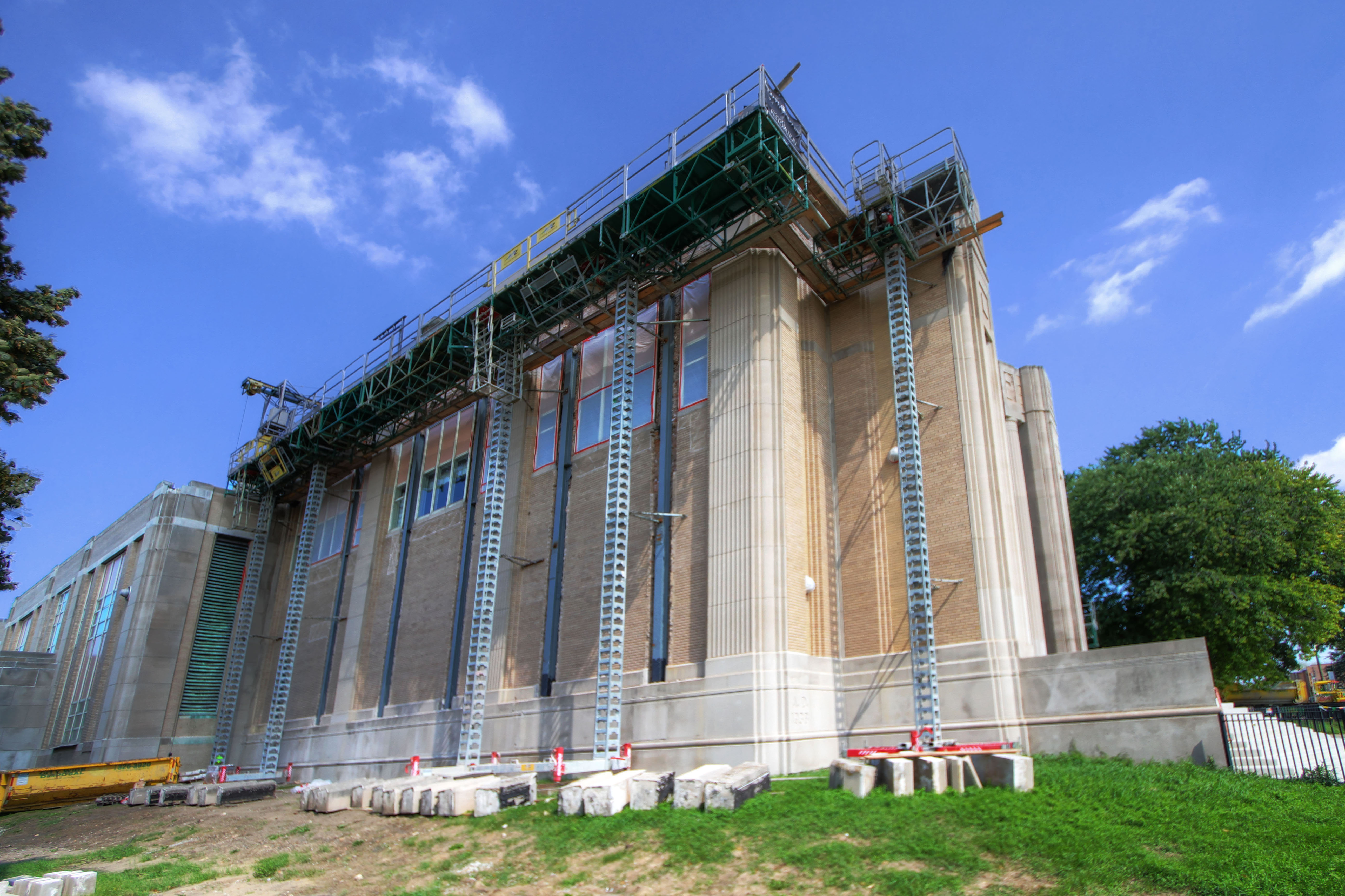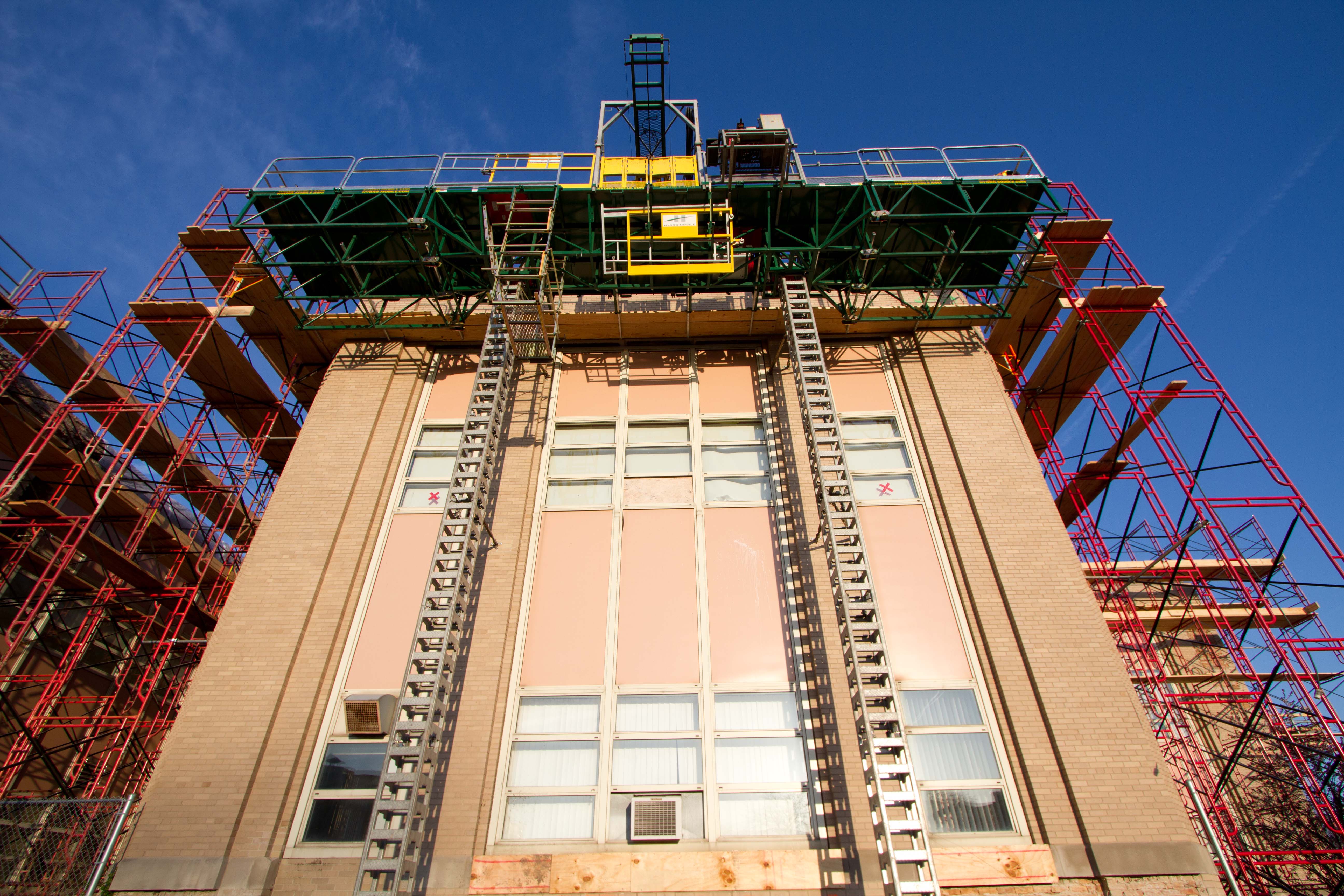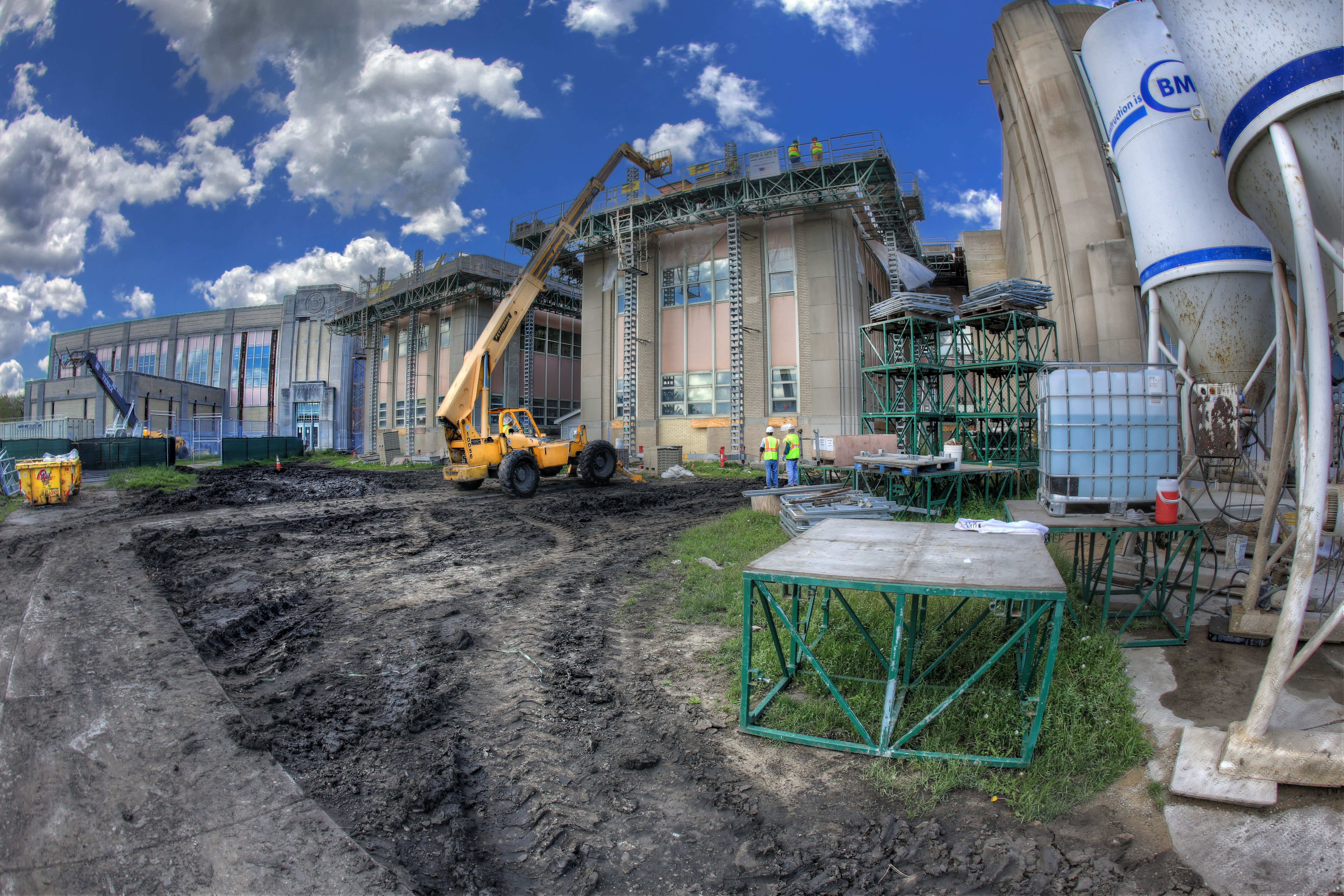Chicago Vocational Career Academy
Architect: Bauer Latoza Studio & S.W.W.B.
Owner: Chicago Public Schools
Time Frame: 9 Months
Value: $16,000,000.00
Nestled into the far southeast side of Chicago in the Avalon Park neighborhood, Chicago Vocational High School is an 800,000 square foot building with 117 facade elevations that sprawls out onto a 25 acre site. The project required the demolition of nearly 10,000 lineal feet of masonry parapet walls and coping stones, the installation of 1.3 million brick, 20,000 lineal feet of structural steel repairs
and cleaning, 120,000 square feet of grinding and tuckpointing, as well as the protection of 94,000 square feet of existing windows. It would require a full-time crane, 7 forklift-tractors, 8 mortar silos and 429 dumpsters, along with thousands of feet of scaffolding. And, it all had to be done in 9 months while school was still in session.
In addition to the 120-man crew working 10-12 hour shifts, 6 days a week, the on-site management team had the unenviable task of keeping the project on track to meet the tight schedule. Lead by two seasoned general superintendents and supported by an experienced project engineer and a full time safety consultant, the massive site was strategically divided into 4 smaller parts creating 4 independently functioning job sites. Each zone (as we called them) was fully equipped with two dedicated foremen, its own materials, tools, mortar silos, storage container, tractor and a tractor operator. By breaking the huge site up into smaller parts, maintaining quality and meeting milestone deadlines was easily achievable. Once the project commenced, each morning began before sunrise at 5am with a meeting between the foremen and the on-site management team to discuss the day’s objectives. Those foremen then held morning huddles in their respective zone-crews and relayed the appropriate tasks, goals and safety concerns to each tradesmen before their day began. It was this level of organized communication and attention to detail that lead to 204 consecutive safe work days without a lost-time injury. In order to achieve maximum daily production, zone-crews were sub-divided into smaller specialty crews based on each tradesmen’s strengths/weaknesses. A scaffold crew was responsible for erecting, maintaining and dismantling of the thousands of lineal feet of pipe-frame, Hydro Mobile and swing-stage scaffolding used. A demo crew full of hard-chargers was responsible for the demo/removal of all stone copings, brick parapets, brick columns and the removal of steel. Following the demo crew, a highly specialized crew of bricklayers certified to weld was responsible for repairing and reinforcing all of the existing structural steel. Weekly visits by the architect and structural engineer identified the additional areas while the installed repairs were inspected daily by the owner’s structural steel consultant. Careful coordination and a prompt, consistent and accurate paper trail was paramount to keeping the steel repairs on track. In hot-pursuit of the steel/welding crew was a large contingent of experienced journeymen bricklayers, upcoming apprentices and aggressive mason tenders who were responsible for the installation of the 1.3 million brick it would take to rebuild the school. Last but certainly not least, the clean-up crew followed behind the installation removing debris, organizing leftover materials and consolidating the project.






